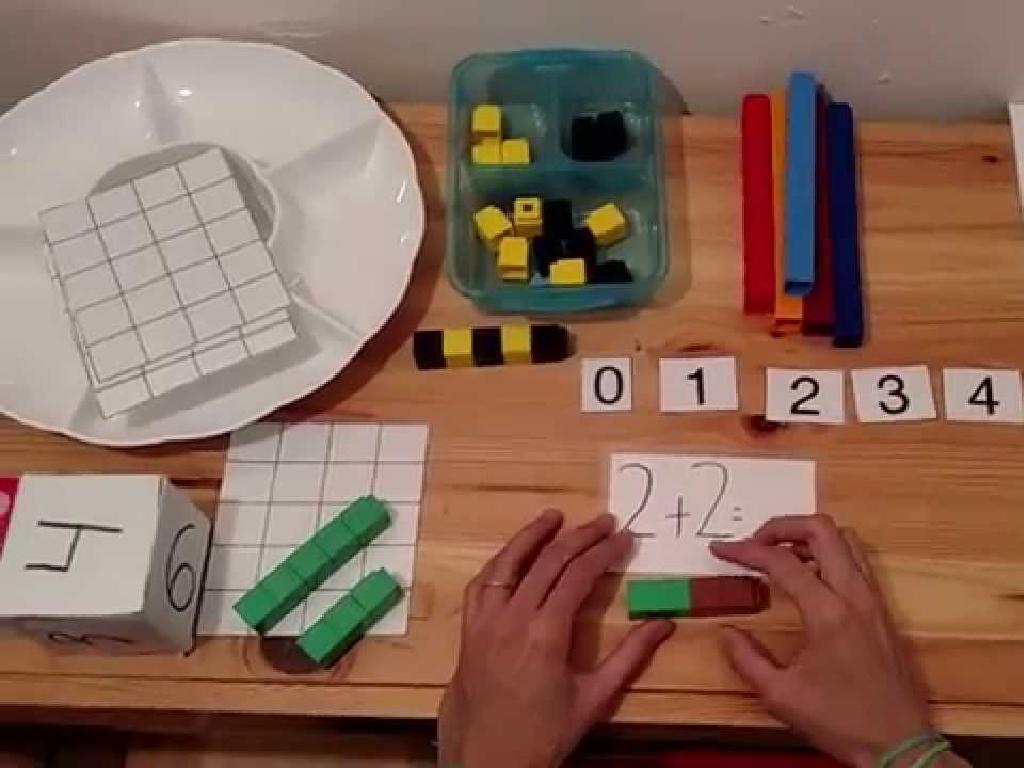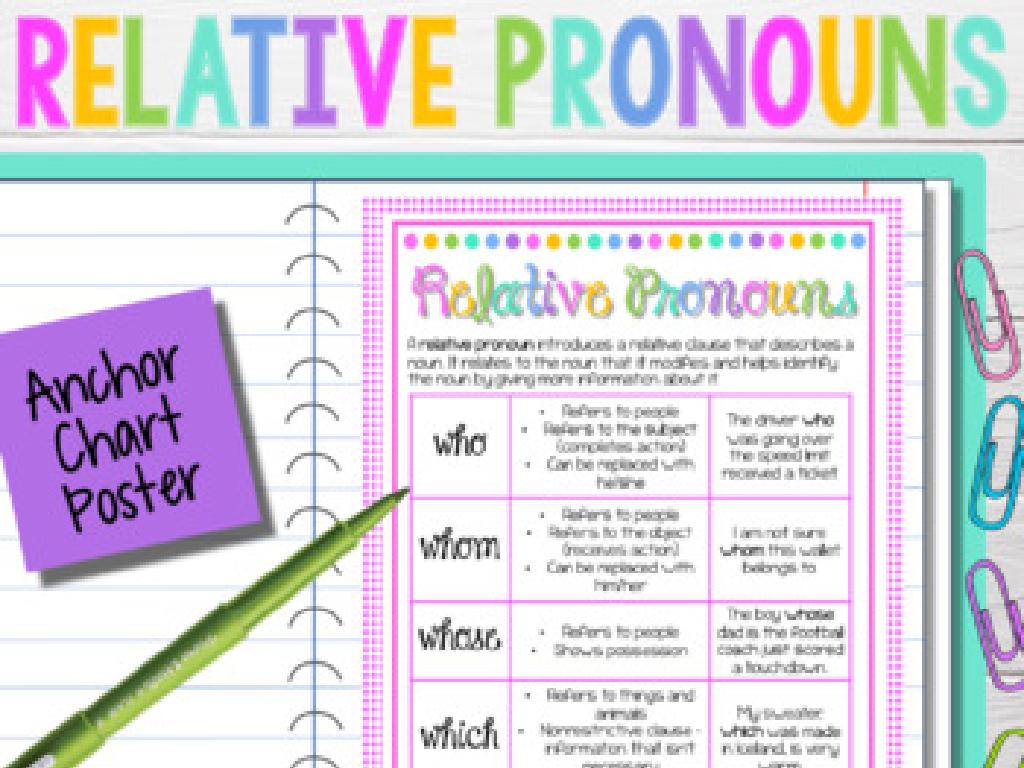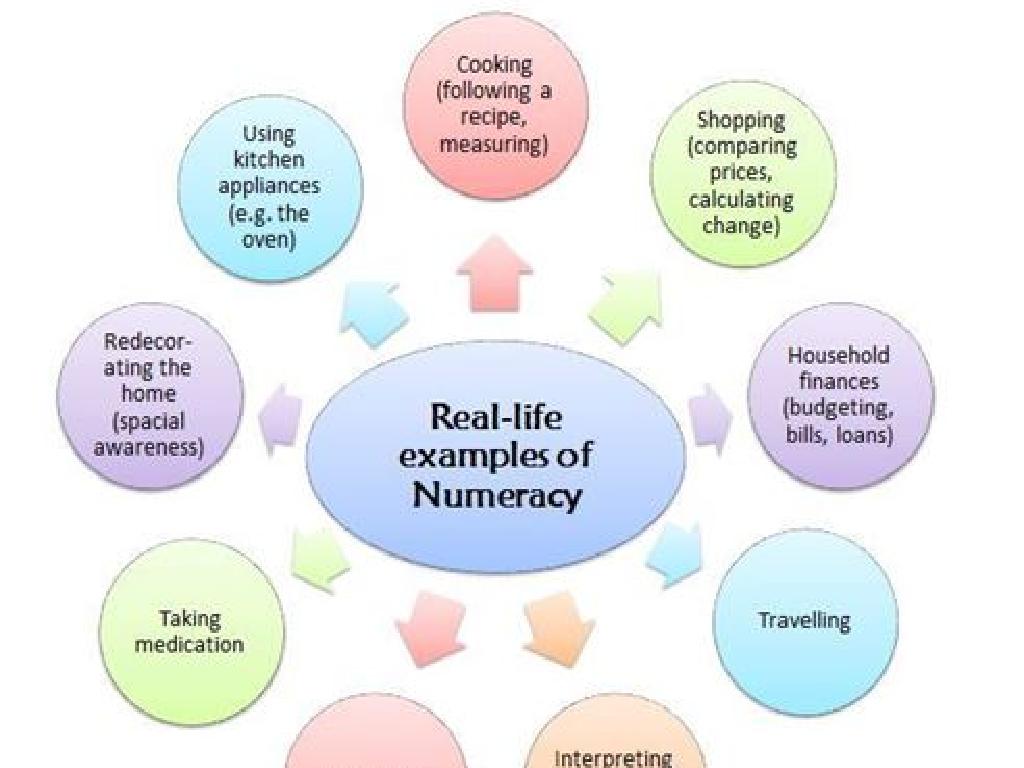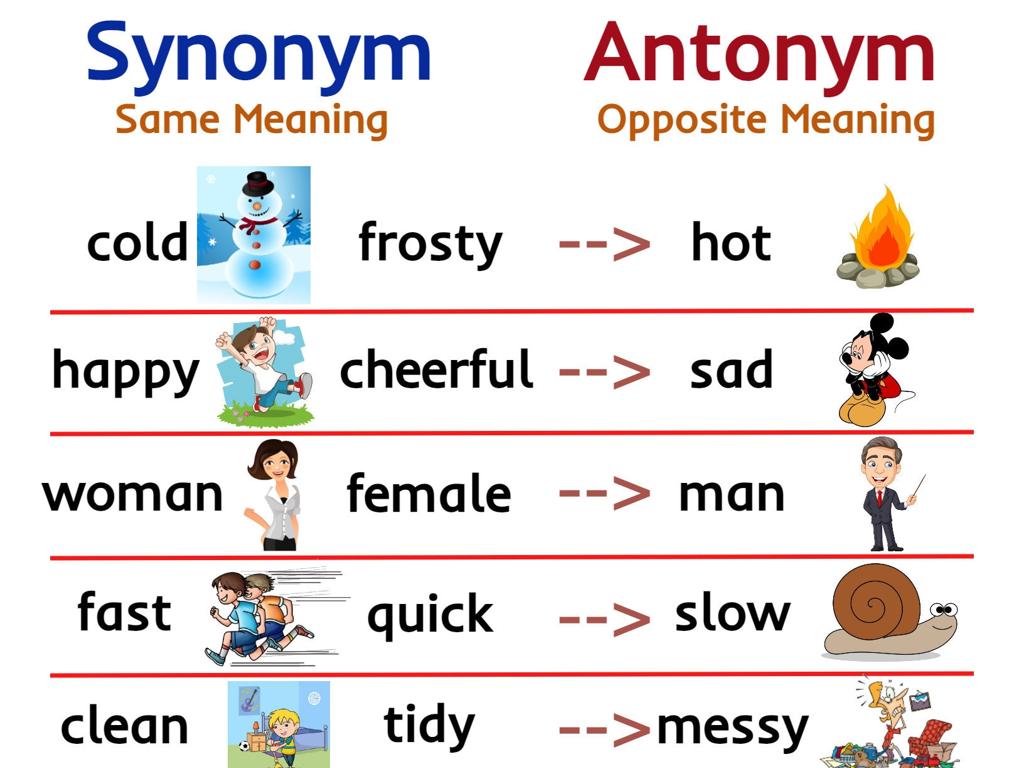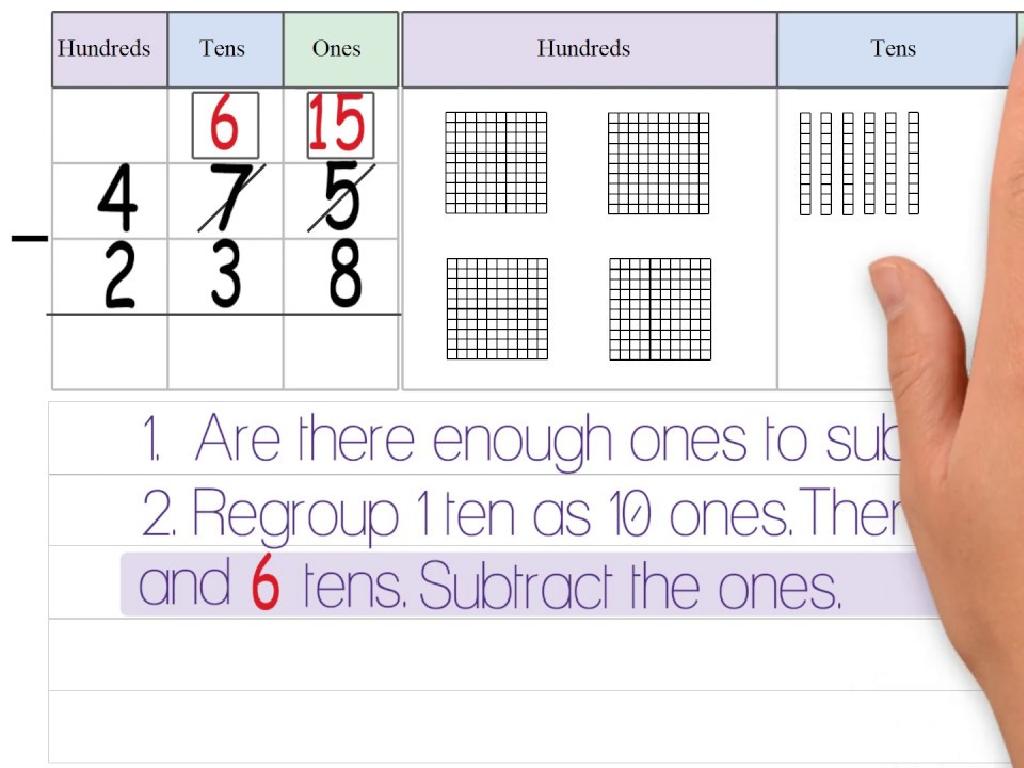Do You Have Enough Money? - Up To $1
Subject: Math
Grade: Second grade
Topic: Money Up To $1
Please LOG IN to download the presentation. Access is available to registered users only.
View More Content
Introduction to Money: Coins and Bills
– Learn about money: coins and bills
– Identify coins: penny, nickel, dime, quarter
– A penny is 1 cent, nickel is 5 cents, dime is 10 cents, quarter is 25 cents
– Recognize and value a $1 bill
– A $1 bill is equal to 100 pennies, 20 nickels, 10 dimes, or 4 quarters
– Practice with real or play money
– Use examples to show how different coins make up $1
|
This slide introduces students to the basics of U.S. currency, focusing on coins and the $1 bill. Start by showing real or play money to the class and explain that money is used to buy things. Go over each coin, showing the differences in size, color, and value. Explain that 100 pennies make a dollar, just like 20 nickels, 10 dimes, or 4 quarters do. Show a $1 bill and explain its value. Encourage students to touch and interact with the coins and bills if possible. For homework, they could practice with their own money or play money to create different combinations that add up to $1. This tactile experience will help solidify their understanding of the value of money and how different coins can be used together to reach the same total.
Counting Coins: Do You Have Enough Money?
– Learn the value of coins
– Pennies, nickels, dimes, and quarters each have different values.
– Practice counting coins
– Let’s add coins together to find their total value.
– Understand coin equivalents
– How many pennies are in a nickel? How many nickels in a quarter?
– Examples of counting coins
– If you have 2 nickels and 3 pennies, how much money do you have?
|
This slide is aimed at helping second-grade students understand the concept of money up to $1. Start by introducing the value of each coin: penny (1 cent), nickel (5 cents), dime (10 cents), and quarter (25 cents). Engage the class in a hands-on activity where they practice counting coins to reach a total value. Use relatable examples to demonstrate how smaller coins combine to make larger ones, such as how many pennies are needed to make a nickel, and so on. Encourage students to think about different combinations of coins that can add up to the same value, enhancing their understanding of equivalency and addition. The goal is for students to confidently determine if they have enough money to ‘buy’ classroom items priced up to $1.
Do You Have Enough Money?
– Understanding buying items
– What does it mean to buy something?
– Counting coins for purchases
– How to add up coins to match item prices
– Exercise: Buying a toy car
– Do you have 50 cents in coins to get the car?
|
This slide introduces the concept of transactions to second graders, teaching them the basics of buying items and understanding the value of money. Start by discussing what it means to buy something and the exchange of money for goods. Then, move on to counting coins, using real or play money to demonstrate how different coin combinations can add up to the price of an item. For the exercise, present a simple scenario where students must determine if they have enough coins to buy a toy car for 50 cents. This practical application solidifies their understanding of currency and its use in everyday life. Encourage students to think about different ways to make 50 cents using various coins and to share their methods with the class.
Making Change: Do You Have Enough Money?
– Learn to make change from $1
– Role-play buying and change
– Pretend to buy an item and get back the correct amount of money
– Example: Item costs 75 cents
– If you give $1 for a 75 cent item, what is your change?
– Calculate change from $1
– Use subtraction to find the difference: $1 – 75 cents
|
This slide introduces the concept of making change from a dollar, which is a practical skill for students to learn. Start by explaining that making change is the process of giving back the correct amount of money after a purchase. Set up a role-play scenario where students can practice being both the shopper and the cashier. Use the example provided to illustrate the concept: if an item costs 75 cents and the customer pays with $1, they should receive 25 cents back. Encourage students to think of it as a simple subtraction problem. Provide additional examples with different amounts and have students calculate the change to reinforce the concept. This activity will help students understand the value of money and improve their subtraction skills.
Adding It All Up: Counting Coins
– Practice adding coins together
– Add pennies, nickels, dimes, and quarters to reach exact amounts
– Use real or play coins
– Hands-on experience with coin manipulation enhances learning
– Class activity: Make 50 cents
– How many different ways can you combine coins to total 50 cents?
– Explore multiple combinations
– There’s more than one way to make 50 cents, let’s find them all!
|
This slide introduces a practical math activity focused on adding coins to make up to $1. The goal is to help students understand the value of different coins and practice their addition skills. Provide students with real or play coins to facilitate hands-on learning. The class activity challenges students to find different combinations of coins that add up to 50 cents, reinforcing their understanding of coin values and addition. Encourage students to work in pairs or small groups to foster collaboration. As a teacher, prepare to guide them through the activity, offering hints and ensuring they explore various combinations, such as 5 dimes, 2 quarters, 10 nickels, or other possible variations.
Class Activity: Shopping Game
– Set up a classroom store
– Use play money to shop
– Choose items to ‘buy’
– Pick any item under $1
– Check if you have enough money
– Count your money before ‘buying’
|
This interactive activity is designed to help students understand the concept of money and making purchases within a budget. Set up a small ‘store’ in the classroom with various items labeled with prices less than $1. Provide students with play money to simulate a shopping experience. They will select items they wish to ‘purchase’ and determine if the amount of money they have is sufficient. This exercise will reinforce their counting skills and introduce basic financial literacy concepts. For the activity, consider having items priced at various amounts to challenge different skill levels. Possible variations include offering discounts, handling change, or setting a budget limit. Observe and assist students who may struggle with the concept and ensure everyone has a chance to participate.
Money Mastery: Conclusion and Review
– Understanding money is key
– Counting coins confidently
– Practice with pennies, nickels, dimes, and quarters
– Making change correctly
– Learn to give back the least number of coins as change
– Share today’s money insights
– Discuss what new facts you’ve learned about money
|
As we wrap up today’s lesson, it’s important to remind students why knowing about money is essential. It helps with everyday activities like shopping and saving. Review the coin counting methods we’ve learned, ensuring students can identify and add different coin values up to $1. Practice making change, emphasizing the concept of giving the least number of coins back. Finally, encourage students to share their learnings or any ‘aha’ moments they had during the lesson. This reinforces their knowledge and allows them to learn from each other’s experiences. For homework, they could be asked to set up a small ‘store’ at home to practice these skills with family members.

